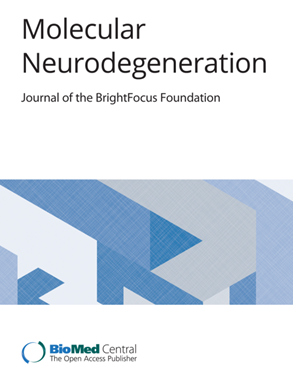Molecular and cellular characteristics of cerebrovascular cell types and their contribution to neurodegenerative diseases
IF 17.5
1区 医学
Q1 NEUROSCIENCES
引用次数: 0
Abstract
Many diseases and disorders of the nervous system suffer from a lack of adequate therapeutics to halt or slow disease progression, and to this day, no cure exists for any of the fatal neurodegenerative diseases. In part this is due to the incredible diversity of cell types that comprise the brain, knowledge gaps in understanding basic mechanisms of disease, as well as a lack of reliable strategies for delivering new therapeutic modalities to affected areas. With the advent of single cell genomics, it is now possible to interrogate the molecular characteristics of diverse cell populations and their alterations in diseased states. More recently, much attention has been devoted to cell populations that have historically been difficult to profile with bulk single cell technologies. In particular, cell types that comprise the cerebrovasculature have become increasingly better characterized in normal and neurodegenerative disease contexts. In this review, we describe the current understanding of cerebrovasculature structure, function, and cell type diversity and its role in the mechanisms underlying various neurodegenerative diseases. We focus on human and mouse cerebrovasculature studies and discuss both origins and consequences of cerebrovascular dysfunction, emphasizing known cell type-specific vulnerabilities in neuronal and cerebrovascular cell populations. Lastly, we highlight how novel insights into cerebrovascular biology have impacted the development of modern therapeutic approaches and discuss outstanding questions in the field.脑血管细胞类型的分子和细胞特征及其对神经退行性疾病的贡献
许多神经系统疾病和失调都缺乏足够的治疗方法来阻止或减缓疾病的进展,直到今天,任何致命的神经退行性疾病都没有治愈的方法。在某种程度上,这是由于构成大脑的细胞类型具有令人难以置信的多样性,在了解疾病的基本机制方面存在知识缺口,以及缺乏向受影响区域提供新的治疗方式的可靠策略。随着单细胞基因组学的出现,现在可以询问不同细胞群的分子特征及其在患病状态下的变化。最近,大量的注意力被投入到历史上难以用大量单细胞技术分析的细胞群上。特别是,在正常和神经退行性疾病背景下,构成脑血管系统的细胞类型已变得越来越具有特征。在这篇综述中,我们描述了目前对脑血管结构、功能、细胞类型多样性及其在各种神经退行性疾病机制中的作用的理解。我们专注于人类和小鼠脑血管系统的研究,并讨论脑血管功能障碍的起源和后果,强调已知的神经元和脑血管细胞群中细胞类型特异性脆弱性。最后,我们强调脑血管生物学的新见解如何影响现代治疗方法的发展,并讨论该领域的突出问题。
本文章由计算机程序翻译,如有差异,请以英文原文为准。
求助全文
约1分钟内获得全文
求助全文
来源期刊

Molecular Neurodegeneration
医学-神经科学
CiteScore
23.00
自引率
4.60%
发文量
78
审稿时长
6-12 weeks
期刊介绍:
Molecular Neurodegeneration, an open-access, peer-reviewed journal, comprehensively covers neurodegeneration research at the molecular and cellular levels.
Neurodegenerative diseases, such as Alzheimer's, Parkinson's, Huntington's, and prion diseases, fall under its purview. These disorders, often linked to advanced aging and characterized by varying degrees of dementia, pose a significant public health concern with the growing aging population. Recent strides in understanding the molecular and cellular mechanisms of these neurodegenerative disorders offer valuable insights into their pathogenesis.
 求助内容:
求助内容: 应助结果提醒方式:
应助结果提醒方式:


